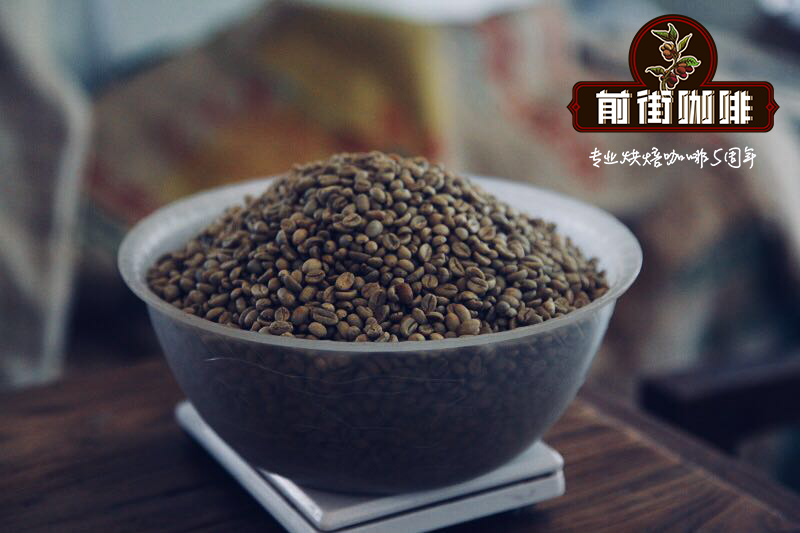How does Costa Rica process beans and how does it sift beans?

Professional coffee knowledge exchange more coffee bean information please follow the coffee workshop (Wechat official account cafe_style)
Costa Rican farmers have been growing high-quality Arabica coffee beans for generations. Over time, they have developed some of the best planting methods in the world, and they have been concerned about the changes in the coffee trees they grow over the years; artificial coffee picking is a tradition for Costa Rican farmers to respect the circular growth of nature.
Selective harvesting: use selective harvesting at the beginning of the harvest, when most beans are not yet ripe. In selective picking, pickers can only pick ripe cherries and judge fruit picking by their appearance and texture with professional experience. The rest of the immature cherry fruits were left on the branches to continue to mature and harvested later in this harvest season.
Stripping harvest: before the end of the harvest season, most cherries are ripe and hand-picked ripe beans can no longer meet the time requirements. At this time, the fruitful branches will be cut and stripped to facilitate the regeneration of new buds in the coming season (Arabica coffee trees can be picked for up to 100 years).
The coffee harvest season in Costa Rica is only once a year between October and March of the following year. In this season, ripe coffee beans are carefully harvested and sent to the processing center.
Refined processing of Costa Rican coffee beans:
Natural sun: fresh, ripe coffee cherries are dried in the natural sun to separate the pulp from the seeds. The natural sun drying method will produce the unique flavor characteristics of coffee.
Washing: fresh, ripe coffee cherry fruits are sent to a wet mill, and high-pressure water strips the peel, pulp and parchment pulp from the seeds to get clean coffee beans (seeds) and dry them.
Honey treatment: remove the peel and a small part of the pulp of fresh and ripe coffee cherry fruit, and then use natural drying to infiltrate more pulp flavor into the coffee beans.
End
Important Notice :
前街咖啡 FrontStreet Coffee has moved to new addredd:
FrontStreet Coffee Address: 315,Donghua East Road,GuangZhou
Tel:020 38364473
- Prev

Create the perfect natural environment of Costa Rican coffee with attractive aroma
Professional coffee knowledge exchange more coffee bean information Please follow the coffee workshop (Wechat official account cafe_style) Costa Rican Coffee Costa-Rica coffee's excellent quality stems from a variety of elements, including a perfect natural environment, professional manual picking, environmental practices, diversified planting areas and active guidance of government regulations. Make Costa Rican coffee.
- Next

Poas Boaz is a volcanic region in central Costa Rica at an altitude of 1,200 to 1,600 meters.
Professional coffee knowledge exchange More coffee bean information Please pay attention to coffee workshop (Weixin Official Accounts cafe_style) Costa Rica has eight different coffee growing areas. Each region produces coffee beans with its own unique flavor profile, creating a rich variety of flavors in Costa Rica. Costa Rica's eight major coffee producing regions include Poas Poas
Related
- Detailed explanation of Jadeite planting Land in Panamanian Jadeite Manor introduction to the grading system of Jadeite competitive bidding, Red bid, Green bid and Rose Summer
- Story of Coffee planting in Brenka region of Costa Rica Stonehenge Manor anaerobic heavy honey treatment of flavor mouth
- What's on the barrel of Blue Mountain Coffee beans?
- Can American coffee also pull flowers? How to use hot American style to pull out a good-looking pattern?
- Can you make a cold extract with coffee beans? What is the right proportion for cold-extracted coffee formula?
- Indonesian PWN Gold Mandrine Coffee Origin Features Flavor How to Chong? Mandolin coffee is American.
- A brief introduction to the flavor characteristics of Brazilian yellow bourbon coffee beans
- What is the effect of different water quality on the flavor of cold-extracted coffee? What kind of water is best for brewing coffee?
- Why do you think of Rose Summer whenever you mention Panamanian coffee?
- Introduction to the characteristics of authentic blue mountain coffee bean producing areas? What is the CIB Coffee Authority in Jamaica?

